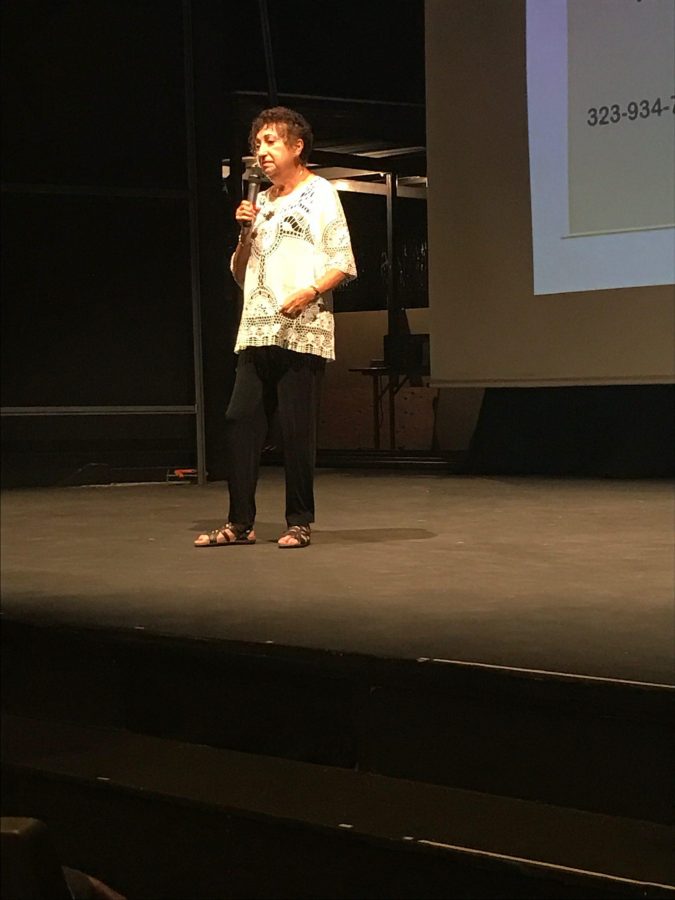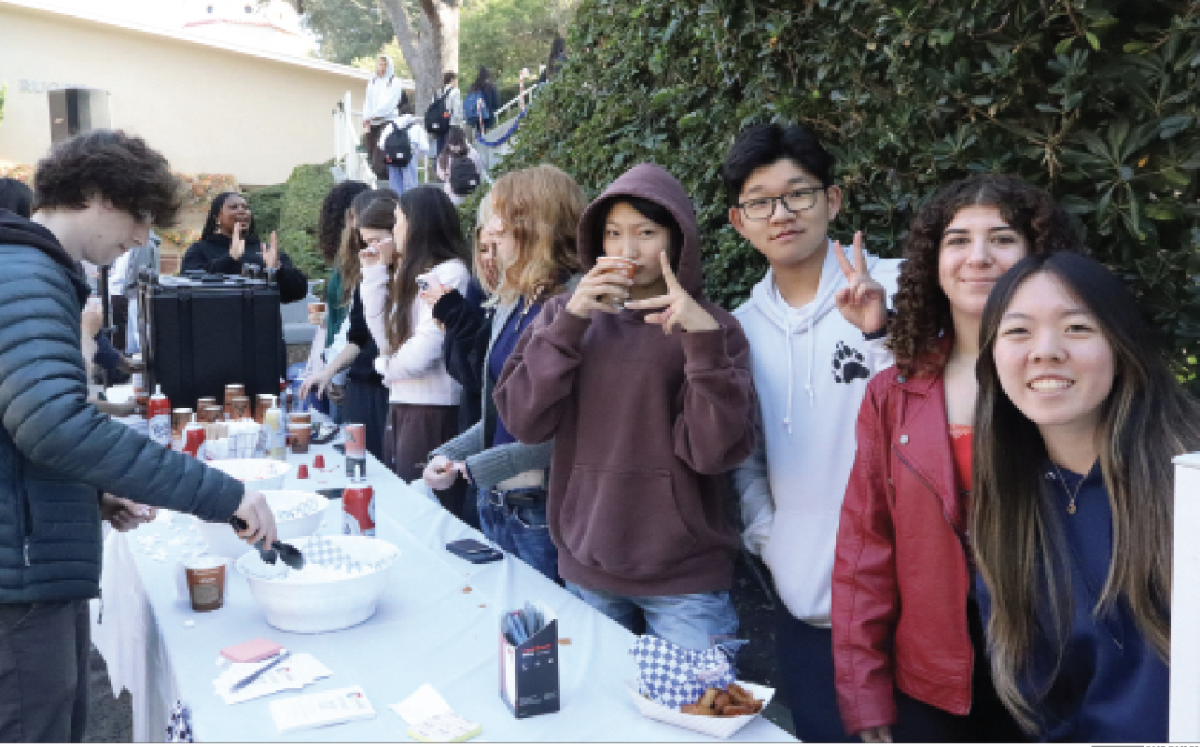Holocaust survivors Gabriella Karin and Bob Geminder spoke at the junior class assembly Friday to share their stories with students and provide personal insight into the atrocities of World War II.
Director of the Center for Excellence in Teen Experiential Education at the Builders of Jewish Education Organization Alisha Pedowitz introduced the two guests.
“Humanity has great capacity for hope and also great capacity for horror,” Pedowitz said. “One of the most profound examples of both that horror and that hope comes from the Holocaust.”
Karin, originally from Slovakia, which was then part of Czechoslovakia, recounted her experience as a young eight-year-old girl when the war first started.
“Before the war we lived in a peaceful, democratic country, very similar to what we live in today,” Karin said. “In our wildest dreams, we could not have imagined what happened, but it did.”
She discussed the new regulations imposed on the Jewish population, including a strict dress code and a curfew of 6 p.m.
In order to evade persecution, Karin was placed in a convent and took on the identity of a Christian girl.
“I went to mass every day, and I cried myself to sleep every night,” Karin said.
Slovak soldiers initiated the deportation of Jews in 1942, but Karin was harbored by a stranger along with seven others and hid in his one-bedroom apartment.
“For nine months I was sitting on a chair, unable to move around and unable to talk,” Karin said. “The only thing I could do was read.”
Now a sculptor and illustrator, Karin shares her story with presentations and through her artwork. Her illustrations appear in Memories that Won’t Go Away, a book by Michelle M. Gold written in memory of children who were saved by the Kindertransport, a series of rescue efforts initiated by Great Britain that saved thousands of Jewish kids’ lives.
“Everything can be taken away from you, even the clothes you wear,” Karin said. “But nobody can take away from you what you have in your head. Put good stuff in it, it’s yours.”
Geminder, originally from Poland, then shared his story. After ambushed by German soldiers, Geminder was forcibly moved east to the edge of Russia and what is now Ukraine.
The Germans rounded up all 20,000 Jews in the community and transported them to a nearby cemetery, where 14,000 of them were shot and killed. Geminder was one of the few survivors of this massacre.
“I survived by pure luck,” Geminder said.
He was then placed in a ghetto with the other 6,000 survivors, including his mother and brother. Hearing that the ghetto was to be eliminated, Gemidner’s mother made plans to escape.
Once out of the ghetto, Geminder disguised himself as a Christian in the town of Krakow. However, it was not long until others suspected he was a Jew, so Geminder hid in the attic of a farmer in the town.
Eventually Geminder’s mother decided to move the family to Warsaw. There, he and his family, along with many other Jewish families, were brought to a train station and were meant to be sent to Auschwitz, but Geminder was able to make another escape and never arrived at the concentration camp.
“The Germans were trying to deceive the people until the last minute that they were going to work instead of going to die,” Geminder said.
Geminder is now a teacher and advocate for the March of the Living, an educational program that brings high-school seniors to Israel and Poland to learn about the roots of the Holocaust.
The assembly gave students the opportunity to reflect on past events but also their own lives.
“It’s one thing to hear about the Holocaust but to listen to survivors is another,” Ayanna Frey ’18 said. “My heart hurt for these people when hearing their stories. I think that it made me realize how lucky I am today.”





























